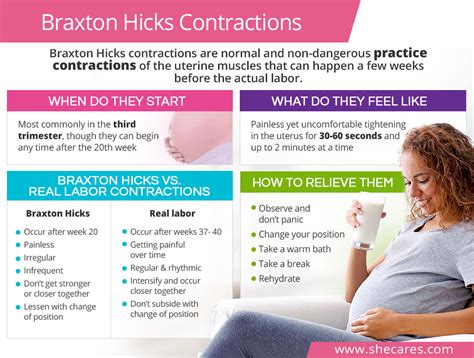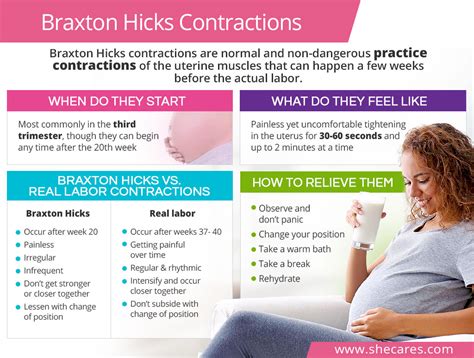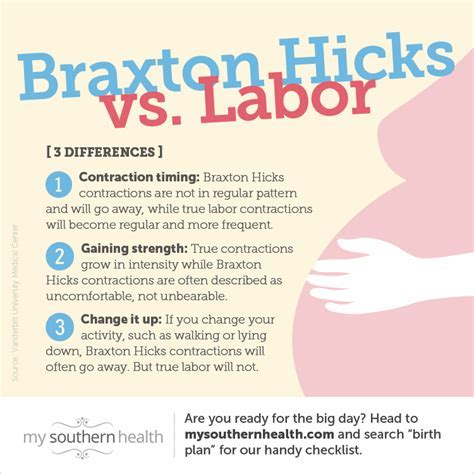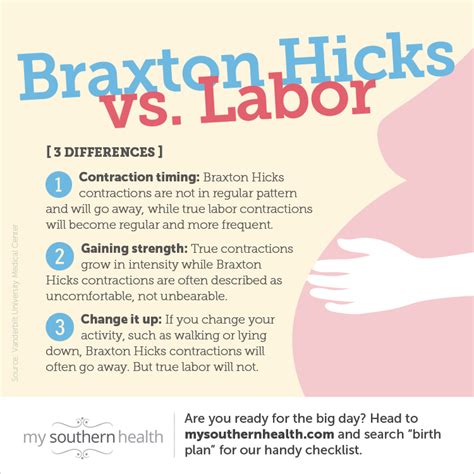Intro
Discover if Braxton Hicks contractions are painful. Learn about false labor pains, pregnancy symptoms, and prenatal care to differentiate between harmless practice contractions and real labor signs.
For many women, pregnancy is a time of great joy and anticipation, but it can also be a period of uncertainty and discomfort. One common phenomenon that expectant mothers may experience is Braxton Hicks contractions, which can be a source of confusion and concern. These contractions are often referred to as "practice" contractions, but the question remains: are Braxton Hicks painful? In this article, we will delve into the world of Braxton Hicks, exploring what they are, why they happen, and how they feel.
As women navigate the journey of pregnancy, they may begin to feel strange sensations in their uterus, which can be unsettling. Braxton Hicks contractions are a normal part of pregnancy, typically starting around the 16th to 20th week. They are characterized by a tightening or hardening of the uterus, which can be felt as a mild to moderate cramping sensation. But what exactly causes these contractions, and are they a cause for concern? To answer these questions, we must first understand the underlying mechanisms that drive Braxton Hicks.
Understanding Braxton Hicks Contractions

The Causes of Braxton Hicks Contractions

Hormonal Changes and Braxton Hicks
The hormone oxytocin is often referred to as the "love hormone" because of its role in social bonding and attachment. However, oxytocin also plays a crucial role in childbirth, stimulating the uterus to contract during labor. During pregnancy, oxytocin levels may surge, triggering Braxton Hicks contractions. But how do these hormonal changes affect the sensation of pain during Braxton Hicks? The answer lies in the complex interplay between hormones, the nervous system, and the uterus.Managing Braxton Hicks Contractions

When to Seek Medical Attention
While Braxton Hicks contractions are generally not a cause for concern, there are certain situations in which women should seek medical attention. These include: * Severe pain or discomfort * Vaginal bleeding or spotting * Regular contractions that are closer than 5 minutes apart * A fever or other signs of infection * Concerns about the health of the baby or the pregnancyDistinguishing Between Braxton Hicks and Labor

Preparing for Labor and Childbirth
While Braxton Hicks contractions can be a source of discomfort, they also serve as a reminder that the body is preparing for labor and childbirth. Women can prepare for this momentous occasion by: * Taking childbirth education classes * Practicing relaxation techniques and breathing exercises * Creating a birth plan * Building a support network of family and friends * Staying physically active and healthyConclusion and Final Thoughts

We invite you to share your thoughts and experiences with Braxton Hicks contractions in the comments below. Have you experienced these practice contractions during pregnancy? How did you manage them, and what advice would you give to other expectant mothers? Share this article with your friends and family to help spread awareness and support for women during pregnancy.
What are Braxton Hicks contractions?
+Braxton Hicks contractions are practice contractions that occur during pregnancy, typically starting around the 16th to 20th week. They are characterized by a tightening or hardening of the uterus, which can be felt as a mild to moderate cramping sensation.
Are Braxton Hicks contractions painful?
+While some women may experience mild discomfort or a feeling of tightness, others may find Braxton Hicks contractions to be quite painful. The level of pain can vary from woman to woman and even from one pregnancy to another.
How can I manage Braxton Hicks contractions?
+There are several strategies that women can use to manage Braxton Hicks contractions, including changing positions, practicing relaxation techniques, staying hydrated, avoiding triggers, and engaging in physical activity.
How can I distinguish between Braxton Hicks and labor?
+Labor contractions are typically more intense and regular, lasting longer and becoming closer together. They can also cause the cervix to dilate and efface, while Braxton Hicks contractions do not.
What should I do if I experience severe pain or discomfort during Braxton Hicks contractions?
+If you experience severe pain or discomfort during Braxton Hicks contractions, you should seek medical attention. This is especially important if you have any concerns about the health of your baby or your pregnancy.
